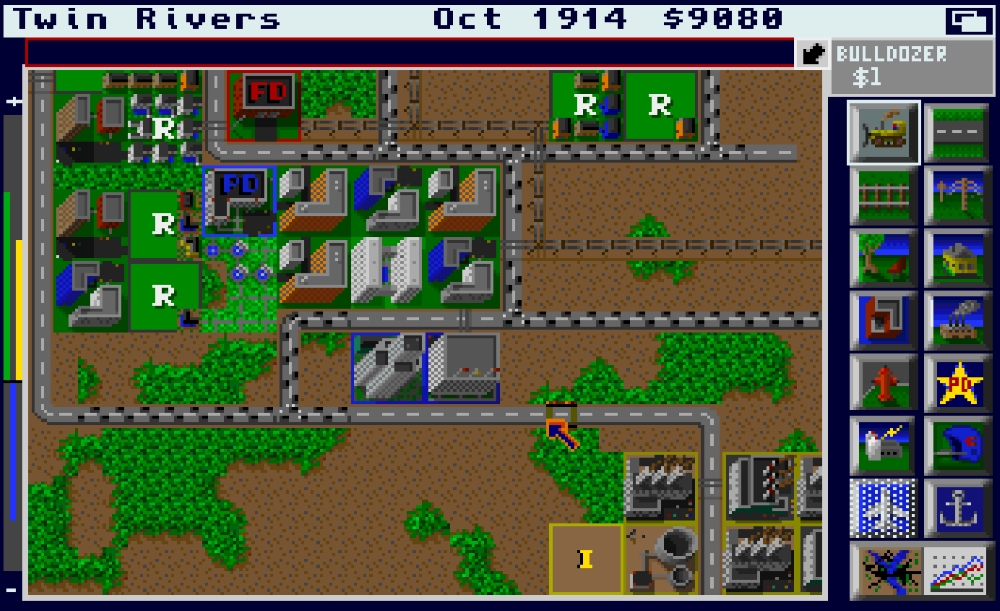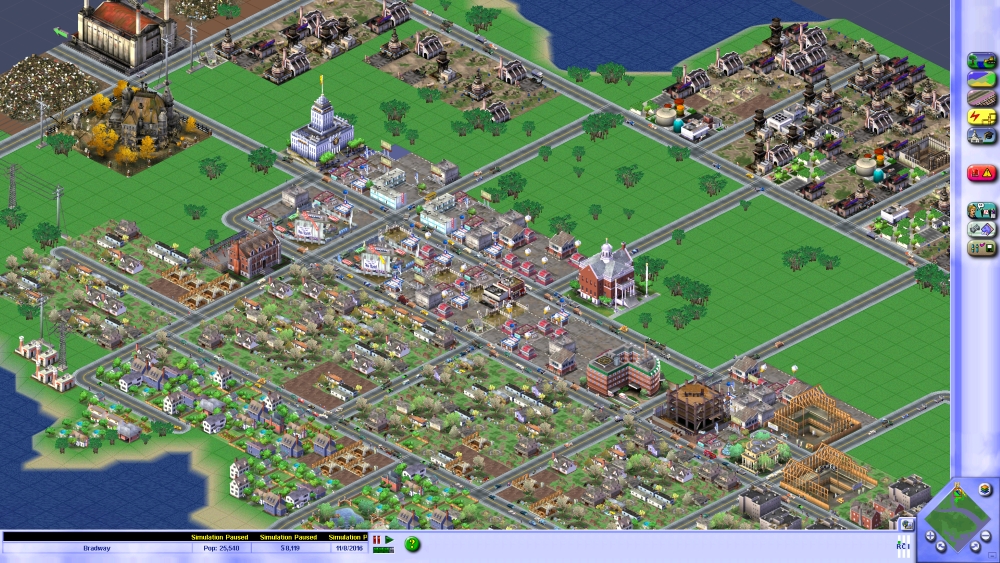So, SimCity, the original and classic city-building game, is 30 today! It was released on this day, 2 February 1989, on Apple Mac and Commodore Amiga, before being released later on just about any and every system going. It’s fair to say that it’s one of the most important and influential computer games ever released. And, it’s perhaps the computer game series that I’ve played and enjoyed the most over the years.

My first experiences with the game were on my Amiga 600 in the early-mid 90s. I don’t remember when I first became aware of it, but I do remember getting hold of a copy from a friend and loving it. I never got very far with any of my cities because I didn’t have a blank disk to save them on and I always cheated by typing “FUND” loads of times before playing, which gave you extra cash.
But I was hooked. It’s such a cliche to say, but it was truly original and utterly unique. The freedom, the creativity and the sheer sense of power it gave you were wonderfully addicting. You weren’t tied to traditional levels, there was no Game Over (unless you ran out of money), the game wasn’t trying overtly or covertly to direct you down a particular path or towards a particular outcome – it just gave you some land, some cash, some tools and let you get on with it. You could play it ultra-seriously and try and create a proper, working, realistic city. Or you could just muck around and see what happened, often resulting in some nightmare dystopian hell-hole, just like <insert name of least favourite city here>.
It was geeky as anything, a far cry from the norm of computer and video games at the time. Even the creator, Will Wright, looked wonderfully geeky. And this distinction from what videogames were “supposed” to be about was even reflected in the story of its inception: Wright was creating a helicopter shooter for the Commodore 64 called Raid On Bungling Bay, but found he was having more fun with the level editor than the game itself. Fuelled by his growing interest in urban planning ideas, he worked on this until it grew into what became SimCity. See? Even its creation is a story of breaking free from conventions, embracing the eclectic and seemingly-uncool and making a success of it.
And perhaps that’s why it clicked for me, the uncool, awkward kid who wasn’t quite into the same stuff as everyone else (for heaven’s sake, I liked Queen who were not a popular choice for teenagers in the 90s.). It fitted me perfectly and I played it loads.
I clung on to my Amiga all through the 90s, hoping against hope that despite Commodore’s demise and the rise of PCs and the 32-bit consoles, it would stage a miraculous comeback as a platform.
Clearly this wasn’t going to happen.
So I missed out on the next two installments, SimCity 2000 and SimCity 3000. A friend at uni had 2000 on his PC and I went and played it from time to time and it was clear that it had taken things to the next level: an isometric viewpoint? Water pipes? Schools? What wonderful, complicated, stunning madness was this? Seriously: this was like the holy grail of computer gaming: surely nothing could beat this! But although it came out on Amiga, it was only on the top-end Amiga 1200 and 4000 (and apparently ran like my thick porridge on both those), so I made do with the original and, occasionally, A-Train, which was good fun and kinda, sorta looked like SC2000 if you squinted a little.

I grew up, got married in 2002 and my wife finally persuaded me it was time to ditch my Amiga and embrace the ways of the PC. And though I was sad to see my Miggy go, when we got a decent Windows XP PC I did enjoy it (say it quietly). And SimCity made an appearance on my PC: I got hold of a copy of 3000 in a strategy games compilation and if memory serves it’s the only game out of it I consistently played.
SC3000 was and still is a great iteration of the series. While there hadn’t been massive developments in the gameplay, the graphics had been seriously improved; now it looked cartoon-y and fun and happy. A newsticker replaced the wonderfully bizarre newspapers that 2000 had used to keep you up to date with happenings in your city: and it was equally mad, amusing and helpful. I played this a lot, and was unable to help myself when SimCity 4 came out, especially when it was on special offer with its expansion pack: I had to get it.
SimCity 4 might appear to be the most difficult of the series: it’s complicated, it’s a lot less “cartoony and fun” than 3000, there’s huge depth to it and it needed a fairly decent PC at the time to run it. But for me, this has always been the most involving and time-consuming installment of the series. There’s something about that depth that sucks me in: I can lose hours to any version of the game, but especially to SC4.
What made this even more so was the all-new regional play. Ever since 2000, there’d always been neighbouring cities in SimCity games, but all they’d really been were ways for you to buy and sell excess water, power and garbage. Now in SC4, you could play those cities. You weren’t just mayor of one city: you were boss of the entire region. You founded those extra cities, linked them up with your starter city, signed the deals and shaped them to make one living, breathing region. The scale of it was mind-boggling, the opportunities it presented immense. For some it was too much; but for me, it was the game I spent the most time with ever.
And the modding scene only added to that. Seriously, go look at the Simtropolis website; the community for this game was and still is immense. There are houses, shops, factories, parks, replacement power stations – right up to mods that replace the entire traffic system in the game. More than 15 years after its release, SC4 is still going strong for many people.

Hmmm… there’s a lot more to say on this – the story of SimCity post number 4. But I’ve typed a lot of that already and it’s huge. So we’ll leave it there for this post, with the slow-burn success that was SimCity 4.
But if you’ve never played a SimCity game, try and find a way to do so. The games from 2000 to 4 can be bought quite easily on various digital game shops and it’s not hard to find CD versions on ebay etc. So you’ve no excuse to lose yourself in a thoroughly geeky, but wonderfully addictive and freeing computer game experience. And if you want another, very personal account, of how special the original SimCity was, then watch LGR’s fabulous 30th anniversary tribute to the game.
Happy 30th birthday, SimCity!